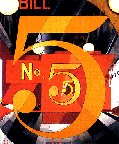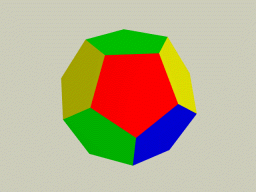This page explores the
connections between art and such other
descriptors of human activity as science, engineering, and mathematics.
"Art" describes many things. Works that possess beauty is one way to
say the same thing. But because beauty is seen differently by different people
vagueness about realm in the term art serves a purpose. What
one likes another may not, yet how should we characterize computer
contributions, such as Shark
Break? Clearly the ability this web image has to allow a viewer to
make changes (shark direction by mouse motion; background scene by
choice from right column; fish selection at left column) adds to the
artistic
power of the original scene. Astronaut Sunita L. Williams' photographs from space can be viewed at
Blue
Beauty. That PowerPoint slide show is much more than images: it has
the power of art.
What can be said about new-technology-supported objects that fits in
with past artistic achievements? People make new things by combining elements (in engineering, synthesis).
They make strides forward in art by using new methods that technology
makes available, e.g., in painting, tempera, oil and gouache. And whether in visual arts or other fields special
language describes that activity. One can think of perspective, the
representation of three-dimensional relationships in a two-dimensional
image. (Compare Greek and Egyptian art.) Or one can look at combining
multiple digital images as in a panorama of the 2009 U.S. presidential inauguration. It
combines 1914 photos. The first 12 are displayed at the cited link,
while a New York Times story indicated that the overview is 1,474
megapixels, and that smaller images were stitched together by
computer software just as in the case of Mars images. Microsoft disseminates Silverlight image-combining
software calling the application "Photo Synthesis." Microsoft provides an inaugural image combining 613 photographs. CNN
solicits individual
inaugural images to combine.
There are many connections between images, writing, and technical tools
for science and engineering. Mathematics, itself an art form, supports both
science and engineering, but also such visual arts as painting,
sculpture and architecture.
Mathematics is like poetry: both are dense. Mathematics isn't classed as
art by the general public. Neither is engineering, nor computer
programming, although "The Art of Computer Programming" [1] fairly describes
what people do in getting software to perform. Math, engineering,
computer programming, chemistry and physics have much in common with other
forms of art. Below we call these and aspects certain others, statistics
and economics in particular, the quantitative fields
The central theme of the quantitative fields is support of innovation,
and when that is well-done, terms like art and beauty apply. This is also
so in painting, sculpture or music. Whether that
theme is called creativity, synthesis, or invention, is relatively
unimportant. But to those most knowledgeable about changes produced through
technology there is only one word that satisfactorily describes what
people have done. That word is art, though sometimes it appears in the
qualified phrase "practical arts" or the close equivalent, "craft" [1, 2].
When it is great, art has impact on all. When something mathematical
becomes part of the general body of knowledge it is because the element
is like an image: something you continue to remember. Some mathematical
sources are available at Book References
and Exploring
Math. To describe what science is Chandrasekhar [3] said:
"... And if I have to describe in one word what is the prime motive which
underlies a scientist's work, I would say systemization. That may sound
rather prosaic, but I think it approaches the truth. What a scientist
tries to do essentially is to select a certain domain, a certain aspect,
or a certain detail, and see if that takes its appropriate place in a
general scheme which has form and coherence; and, if not, to seek
further information which would help him to do that. This is perhaps
somewhat vague, particularly, the use of the words "appropriate,"
"general scheme," "form," and coherence." I admit that these are things
which cannot be defined any more than beauty in art can be defined; but
people who are acquainted with the subject have no difficulty in
recognizing or appreciating it."
He continues mentioning "constancy," "singleness,"
"preoccupation," and "fun." In the 2nd lecture of [3, pp. 25-26]
he quotes Dirac, Thomson (J.J.), and Hardy, where all three present meaningful
phrases describing science.
"... it was a game, a very interesting game one could play (Dirac)"
"... some great men of science ... having said the first word on a subject,
... others (whose) last word ... reduced the subject to logical consistency and
clearness. (Thomson)"
"I have added something to knowledge ... helped others to add more and
that these somethings have a value ... (Hardy)"
Compare these statements that meant much to Chandrasekharan to Michel Angelo's
words on beauty:
"Beauty is the purgation of superfluities."
"In every block of marble I see a statue as plain as though it
stood before me, shaped and perfect in attitude and action. I have only
to hew away the rough walls that imprison the lovely apparition to
reveal it to the other eyes as mine see it."
"I saw the angel in the marble and carved until I set him
free."
"A beautiful thing never gives so much pain as does failing to
hear and see it."
Images of great paintings, statues, and photographs are on the web. You
can explore some from visual art resources. Yet they are also available from newspapers, as in The New York Times' May 12, 2006
publication of Eva Hesse's "Untitled (Rope Piece)" (1970) "made when the artist was
dying" or the
Globe and Mail September 3, 2005 book review* accompanied by a
reproduction of a portrait. Sketches and diagrams are
practical arts. Illustration is a traditional
engineering method. Today it is easy to display sketches and photographs.
Computer networks, software, and scanners are omnipresent modern technologies.
The two
rightmost images were drawn with an ordinary office plastic-point pen,
scanned (again via equipment that modern offices possess), and moved
from a desktop computer by readily available software. In terms of
number of line strokes needed to convey a physical reality through an
image, one of them is "mathematically" maximal while the other is
minimal.
Today many use technology to create. Their work is clearly art in form: e.g., see The Whole Earth, and the final photograph in the next line.
The Whole
Earth is courtesy of Tom Van Sant |

World |
|
|
|
Among the rain and lights I saw the figure 5 in gold on a red fire truck |
 |
Computers? |
A game played worldwide, |
Links below |
Seeds |
Play |
Flex |

Twelve/Five View |
Numbers Text |
| 9/01/11 Version | http://www.cs.ucla.edu/~klinger/art.html |
| ©2009 Allen Klinger |